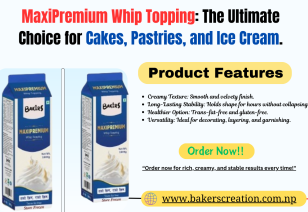January 10, 2025
Master the Art of Homemade Bread with Expert Tips.
Home baking is far more than a culinary enterprise—an age-old blending of art and science. Whatever kind of baking you have, making your bread is fun and satisfying. This comprehensive guide gives you in-depth instructions, practical tips, and amazing techniques for making tasty pastries at home. This guide will lead the beginner in learning the A to Z of baking through various skill-enhancing aspects necessary to create that wonderland of a baking dream. Come and be enticed by this delightful, rewarding farm called baking!
Why Bake at Home?
- Health Benefits
When you bake, you control the ingredients and avoid artificial flavors and too much sugar. Homemade bread can be healthy, fresh, and customized to suit dietary needs.
- Cost-Effective.
A loaf of homemade bread costs significantly less than store-bought artisan bread, especially when made in bulk.
- Creative Freedom.
From whole wheat to sourdough, rye, or gluten-free varieties, baking your bread allows you to experiment with flavors, textures, and ingredients.
Essential Tools and Ingredients.
- Mixing Bowls: For combining and proofing dough.
- Measuring cups and spoons: Ensure precise ingredient proportions.
- Kitchen scale: especially useful for accurate flour measurements.
- Dough Scraper: For kneading and handling sticky dough.
- Baking Stone or Sheet: Provides even heat distribution.
- Proofing Basket (Banneton): Helps maintain dough shape during rising.
- Oven Thermometer: ensures accurate baking temperatures.
- Stand mixer (optional): speeds up kneading for larger batches.
Ingredients.
- Flour: All-purpose, bread flour, or full wheat, depending on the recipe.
- Yeast: Active dry, instant, or fresh yeast for leavening.
- Water: Lukewarm water is essential for activating yeast.
- Salt enhances flavor and controls yeast fermentation.
- Optional Add-ons: seeds, nuts, dried fruits, herbs, or spices for variety.
Step-by-Step Process for Baking Bread.
- Select Recipe.
Start with a simple recipe like classic white bread or rustic artisan bread. As you gain confidence, try harder foods like sourdough or brioche.
2. Prepare the materials.
Measure all the ingredients exactly. Use room-temperature water and yeast to ferment.
3. Mix in the flour.
Combine the flour, yeast, water, and salt in a mixing bowl. Mix until ingredients are fully incorporated. For a sweeter dough, add ingredients like sugar, eggs, or butter after pre-mixing.
4. Digestion.
The flour gets glutened, which gives the bread structure. Knead with hand or stand mixer until dough is smooth and elastic (8-10 minutes).
5. First rise (bulk fermentation).
Cover the dough with a damp cloth and let it rise in a warm place. This takes about 1-2 hours, depending on room temperature. The amount of flour should be doubled.
6. Size.
Gently roll the dough and shape it into your desired shape, whether it be a loaf, baguette, or round ball.
7. The Second Resurrection (Testimony).
Let the shape dough rise again. This step enhances texture and final flavor. Proofreading can take 30 minutes to 2 hours.
8. Baking bread.
Preheat the oven to the specified temperature (approximately 375-475°F). Place the dough on a baking stone or sheet of paper, using a sharp knife to smooth out the tops. Bake until crust is golden brown and internal temperature reaches 190-210°F.
9. Cooling
Let the bread cool completely on a wire rack to allow the crumbs to set. Cutting hot bread can make it crunchy.
Common Issues.
- Dense Bread: Caused by under-kneading or insufficient proofing. Knead longer and ensure the dough rises fully.
- Overproofed dough results in a collapsed loaf. Avoid letting the dough rise too long; keep an eye on its size.
- Cracked crust: often due to inadequate steam. Add a pan of water to the oven during baking to create steam.
FAQ
- What kind of flour is best for baking?
Bread flour is excellent, as it contains a high level of protein that develops and structures gluten. You can use all-purpose or whole-wheat flour for a more specific recipe.
- Why is my bread hard?
Tough breads are typically the result of underpinning or improper proofing. Let the gluten develop well, and let the dough rise enough.
- Can I bake bread without yeast?
Yes, you can use a sourdough starter, or you can try quick bread recipes based on either baking soda or baking powder for leavening.
- How do I store homemade bread?
Store the bread in a paper or cloth bag at room temperature for as long as 3 days; cut and freeze for longer-term storage.
- What is dough scoring for?
Squeeze provides steam release and contributes to the controlled bread expansion while baking.
- How would you know when the bread is cooked?
The inner temperature should read 190-210°F. It should be golden on the crust and hollow when tapped.
- Can I bake artisan bread in the regular oven?
exactly. The pre-heated baking stone or Dutch oven can do the trick by providing nearly the same ambiance as from a professional bread oven.
- What is a cold sore?
In the cold, the dough is refrigerated overnight. This adds flavor and texture to the bread.
Start baking your own fresh, delicious bread today!












